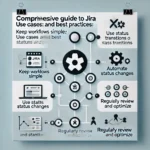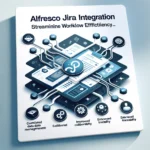TestNG vs JUnit: In the world of Java development, automated testing has become an essential practice to ensure the quality and reliability of software applications. Two of the most popular testing frameworks used by Java developers are TestNG and JUnit. While both frameworks serve the same purpose of unit testing, they have distinct features and capabilities that can influence your choice. In this blog post, we will compare TestNG and JUnit, highlighting their strengths and weaknesses to help you make an informed decision when selecting a testing framework for your Java projects.
TestNG: The Modern Testing Framework
TestNG, inspired by JUnit and NUnit, was developed to overcome some limitations of JUnit and provide additional functionalities. TestNG stands for “Next Generation” and is designed to make test configuration, parallel execution, and test grouping more flexible and powerful.
Advantages of TestNG
- Flexible Test Configuration: TestNG allows you to configure test suites using XML files, making it easier to organize and execute tests based on different parameters and conditions. This flexibility is especially useful when dealing with large test suites or running tests in various environments.
- Parallel Execution: TestNG supports parallel test execution out of the box, enabling you to distribute tests across multiple threads, processes, or even machines. This capability can significantly reduce test execution time, making it ideal for large-scale projects.
- Dependency Management: TestNG enables test dependency management, where you can define relationships between test methods, ensuring that a test runs only if its dependencies pass successfully. This feature promotes better test design and improves test reliability.
- Annotations and Grouping: TestNG offers a wide range of annotations, allowing developers to define test behaviors, set priority, and handle pre- and post-test actions. Grouping tests based on specific criteria is straightforward, allowing for better organization and readability of test cases.
JUnit: The Time-Tested Standard
JUnit, one of the oldest and most widely used testing frameworks for Java, has been the de facto standard for unit testing for many years. It provides a simple and straightforward way to write tests and is tightly integrated with popular IDEs like Eclipse and IntelliJ.
Advantages of JUnit
- Simplicity and Ease of Use: JUnit’s simple and intuitive API makes it easy for developers to start writing tests quickly. Its straightforward test structure makes it a popular choice, especially for smaller projects or those new to automated testing.
- Community and Resources: Due to its longstanding presence in the Java ecosystem, JUnit has a vast and active community. There is a wealth of documentation, tutorials, and support available, making it easy to find solutions to common testing challenges.
- Integration with Build Tools: JUnit is tightly integrated with popular build tools like Maven and Gradle, making it effortless to integrate test execution into the build process.
- Compatibility: JUnit is widely supported by numerous testing frameworks and libraries, ensuring seamless integration with other testing tools.
Comparison table highlighting some key differences between TestNG vs JUnit:
| Feature | TestNG | JUnit |
|---|---|---|
| Annotations | Provides rich set of annotations (e.g., @Test, @BeforeSuite, @AfterSuite) | Uses annotations for test methods (e.g., @Test, @Before, @After) |
| Parallel Execution | Supports parallel test execution at the method, class, or suite level | Sequential test execution by default, parallel execution possible with additional configuration |
| Dependency Testing | Supports defining dependencies between test methods | Limited support for dependency testing |
| Parameterization | Built-in support for parameterized testing using @Parameters annotation | Parameterized tests can be achieved using the @Parameterized annotation |
| Test Groups | Allows grouping of tests using groups attribute for better organization | Does not have native support for test groups, but can be achieved using test suites or custom grouping |
| Listeners | Provides listeners for customizing test execution behavior (e.g., ITestListener) | Offers listeners for various events in the test lifecycle (e.g., TestWatcher) |
| Data Providers | Supports data-driven testing through the use of @DataProvider annotation | Limited support for data-driven testing |
| Assertions | Offers a wide range of assertions, including those for collection comparison | Provides a basic set of assertions, with additional libraries like Hamcrest commonly used for more advanced assertions |
| Execution Configuration | Uses XML-based configuration for test execution parameters | Configuration is typically done through annotations and properties files |
| IDE Integration | Well-integrated with popular IDEs like Eclipse and IntelliJ | Integrated with major IDEs, with good support in Eclipse and IntelliJ IDEA |
| Reporting | Provides detailed HTML reports with information on passed and failed tests | Generates HTML reports and can be extended with third-party libraries for more advanced reporting |
| Suites | Allows grouping tests into suites, enabling better organization and execution control | Does not have native support for test suites but can use categories or custom annotations for grouping |
| Ecosystem | Primarily used in Java projects, but extensions allow integration with other languages | Predominantly used in Java projects, with limited support for other languages |
| Community Support | Has a strong and active community, with regular updates and contributions | Well-established and widely used, with a robust community and extensive documentation |
Choosing the Right Framework
Both TestNG and JUnit are excellent testing frameworks, and the choice between the two largely depends on your project’s specific requirements and preferences. Here are some general guidelines to consider:
- TestNG is more suitable for larger projects with complex test configurations, parallel execution needs, and test grouping requirements.
- JUnit is a good fit for smaller projects or developers who prefer a simple, lightweight, and widely adopted testing framework.
- If your project is already using one of these frameworks, sticking with it might be a reasonable choice to maintain consistency and reduce the learning curve.
Quarkus vs Open Liberty: Unraveling the Best Java Framework for Your Project
In the battle of TestNG vs. JUnit, there is no clear winner, as both frameworks have their strengths and cater to different testing needs. TestNG offers more advanced features like parallel execution and dependency management, making it better suited for larger, enterprise-level projects. On the other hand, JUnit’s simplicity and wide community support make it an excellent choice for smaller projects or teams new to automated testing.
Ultimately, the best choice for your project depends on its specific requirements, team preferences, and long-term goals. Whichever framework you choose, adopting automated testing will undoubtedly lead to improved code quality, faster development cycles, and a more reliable software product.






